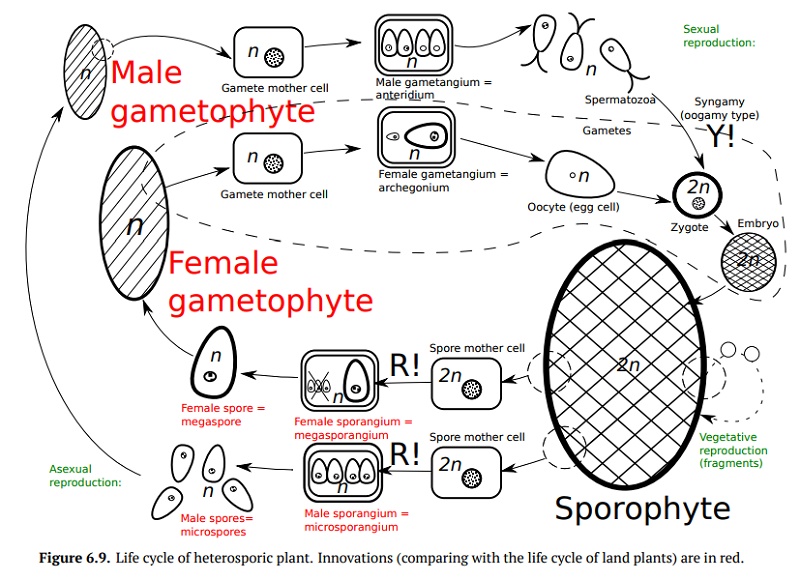Chapter: Introduction to Botany: Growing Diversity of Plants
Heterospory: Next step on land

Heterospory: Next step on land
Vertebrate animals became fully terrestrial (amphibians became first reptiles) only when their fertilization became completely independent from water. Plants started to perform the similar “evolutionary efforts” even earlier, but while rep-tiles actively approach the sexual partner, plants cannot do the same because their tissues and organs evolved for completely different purposes. Instead of the active sex, plants use “carpet bombing” with spores; this was invented to in-crease the chance that two spores land nearby and the distance between sperm and egg cell will be minimal.
However, since simple increase in the number of spores is a great waste of re-sources, plants minimized spore size; this will also allow for the longer distance of dispersal. On the other hand, some spores must remain large because em-bryo (if fertilization occurs) will need the support from the feeding gameto-phyte. Consequently, plants ended up with division of labor: numerous, mi-nuscule male spores which grow into male gametophytes with antheridia only, and few large female spores which make female gametophytes producing only archegonia. Altogether, this heterosporic (Fig. 6.7) cycle makes fertilization less dependent on water and more dependent on spore distribution and game-tophyte features.

This division of labor allows resources to be used more efficiently and also re-stricts self-fertilization. In the plant evolution, there was a high need for het-erospory because it independently arose in several groups of pteridophytes and even among mosses. In the extreme cases of heterospory (Fig. 6.8), a female spore does not leave the mother plant and germinate there, “waiting” for the fertilization from the male gametophyte developed nearby; in fact, this is incip-ient pollination, the step towards the seed.

Heterosporous plants produce one female spore, megaspore, which is rich in nutrients; megaspores are not widely dispersed, but the female gametophyte that comes of it provides nutrition and protection for the zygote, embryo, and young sporophyte. Heterosporic life cycle (Fig. 6.9) starts with a male game-tophyte and a female gametophyte, both of which produce gametes. Once fer-tilization occurs, a zygote develops into sporophyte. The sporophyte will then produce two different sporangia types: female megasporangia and male mi-crosporgangia. Meiosis in megasporangium will frequently result inonefemalespore, megaspore (similar to the meiosis in the ovaries of vertebrate animals), whereas in the microsporangium, meiosis and subsequent mitoses will make nu-merous microspores; both the megaspore and microspores will develop into gametophytes and the cycle will repeat.

Related Topics